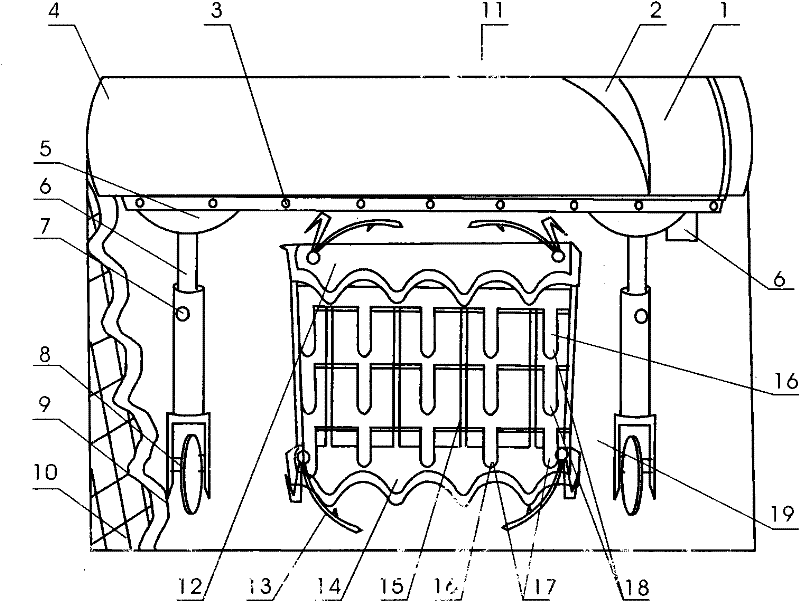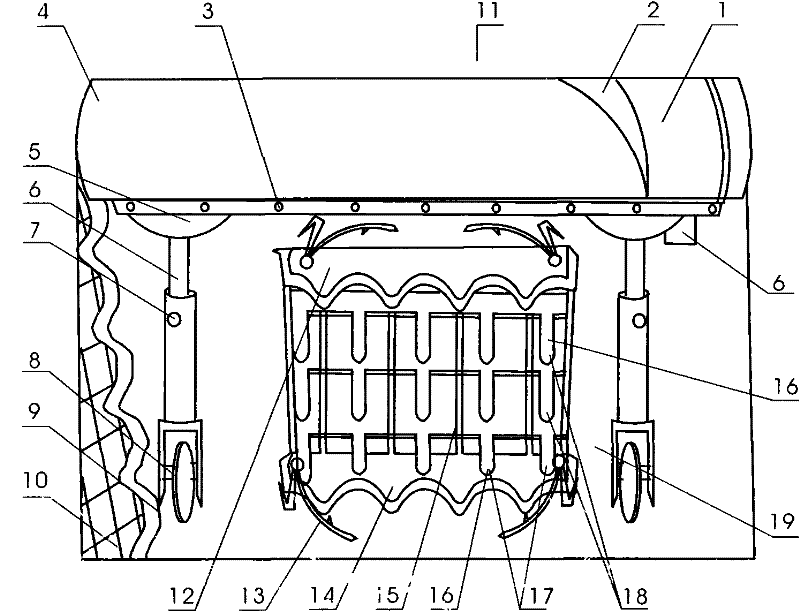Houses for breeding silkworms with living folium mori, row clipping cocooning frames and method
A technology of clamping strips and mulberry branches, which is applied in animal husbandry and other fields, can solve problems such as large investment, silkworm landing, and inconvenience of returning to the mountain in the mulberry field, and achieve the effects of improving productivity, land productivity and labor productivity, and changing the operation mode.
- Summary
- Abstract
- Description
- Claims
- Application Information
AI Technical Summary
Problems solved by technology
Method used
Image
Examples
Embodiment Construction
[0022] Accompanying drawing is the shape and the structural diagram of living mulberry and sericulture shed of the present invention, row clamping cluster, among the figure row clamping cluster's upper clamping bar, lower clamping bar and the protrusion of each grid middle part on the grid cluster horizontal piece is in the folded state: use There are 10 rakes arranged side by side at intervals of 15cm. Dig trenches with a row spacing of 15cm and a plant spacing of 3cm, sow 2 seeds, bury the soil with a rake and compact it, grow into 2-3 effective strips, and broadcast 0.3kg of mulberry seeds per acre of Sha 2x Lunjiao 109, Fengchi or other high-yield High-density herbaceous hybrid mulberry (the cocoon yield per mu in the current year is 162.7kg, and it will be more than 280kg in the second year). The living mulberry silkworm shed and the clamped mulberry branches are fixed and built in the mulberry garden to form a 45° slope, and the large silkworms are cast Live mulberry bre...
PUM
 Login to View More
Login to View More Abstract
Description
Claims
Application Information
 Login to View More
Login to View More - R&D
- Intellectual Property
- Life Sciences
- Materials
- Tech Scout
- Unparalleled Data Quality
- Higher Quality Content
- 60% Fewer Hallucinations
Browse by: Latest US Patents, China's latest patents, Technical Efficacy Thesaurus, Application Domain, Technology Topic, Popular Technical Reports.
© 2025 PatSnap. All rights reserved.Legal|Privacy policy|Modern Slavery Act Transparency Statement|Sitemap|About US| Contact US: help@patsnap.com


